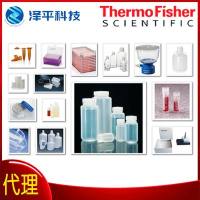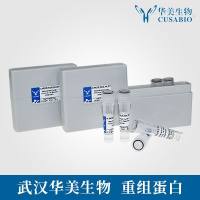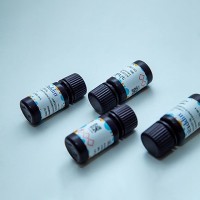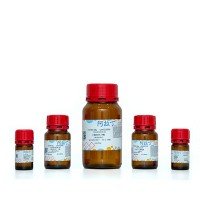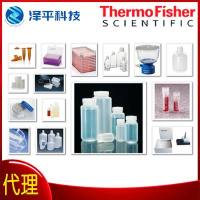Synthesis of Building Blocks and Oligonucleotides Containing {T}O4‐Alkylene‐O4{T} Interstrand Cross‐Links
互联网
- Abstract
- Table of Contents
- Materials
- Figures
- Literature Cited
Abstract
This protocol describes the preparation of O 4 ?thymidine?alkylene?O 4 ?thymidine dimer bis?phosphoramidites and precursors for incorporation into DNA sequences to produce site?specific DNA interstrand cross?links. Linkers are introduced at the 4?position of thymidine by reacting the sodium salt of a diol with a pyrimidinyl?convertible nucleoside to produce mono?adducts, which then undergo reaction with a stoichiometric equivalent of a pyrimidinyl?convertible nucleoside under basic conditions to form O 4 ?thymidine?alkylene?O 4 ?thymidine dimers. Bis?phosphoramidites are incorporated into oligonucleotides by solid?phase synthesis, and mild conditions for deprotection and cleavage from the solid support are employed to prevent degradation of the thymidine modifications. Purification of these cross?linked oligonucleotides is performed by denaturing polyacrylamide gel electrophoresis. This approach allows for the preparation of cross?linked DNA substrates in quantities and purity sufficient for a wide range of biophysical experiments and biochemical studies as substrates to investigate DNA repair pathways. Curr. Protoc. Nucleic Acid Chem . 55:5.13.1?5.13.19. © 2013 by John Wiley & Sons, Inc.
Keywords: DNA interstrand cross?link; chemically modified oligonucleotide; oligonucleotide synthesis; solid?phase synthesis; DNA damage; DNA repair
Table of Contents
- Introduction
- Basic Protocol 1: Synthesis of O4‐Hydroxyalkyl‐Thymidine‐3′‐O‐Phosphoramidites
- Basic Protocol 2: Synthesis of O4‐Thymidine‐Alkylene‐O4‐Thymidine‐3‐O‐Bis‐Phosphoramidites
- Basic Protocol 3: Solid‐Phase Synthesis and Deprotection of Oligonucleotides Containing O4‐Hydroxyalkyl‐Thymidine Mono‐Adducts and O4‐Thymidine‐Alkylene‐O4‐Thymidine Cross‐Link Modifications
- Basic Protocol 4: Purification of Oligonucleotides Containing O4‐Alkylene‐Thymidine Mono‐Adducts and O4‐Thymidine‐Alkylene‐O4‐Thymidine Cross‐Link Modifications
- Commentary
- Literature Cited
- Figures
Materials
Basic Protocol 1: Synthesis of O4‐Hydroxyalkyl‐Thymidine‐3′‐O‐Phosphoramidites
Materials
Basic Protocol 2: Synthesis of O4‐Thymidine‐Alkylene‐O4‐Thymidine‐3‐O‐Bis‐Phosphoramidites
Materials
Basic Protocol 3: Solid‐Phase Synthesis and Deprotection of Oligonucleotides Containing O4‐Hydroxyalkyl‐Thymidine Mono‐Adducts and O4‐Thymidine‐Alkylene‐O4‐Thymidine Cross‐Link Modifications
Materials
Basic Protocol 4: Purification of Oligonucleotides Containing O4‐Alkylene‐Thymidine Mono‐Adducts and O4‐Thymidine‐Alkylene‐O4‐Thymidine Cross‐Link Modifications
Materials
|
Figures
-
Figure 5.13.1 Chemical structure of (A ) the O 4 ‐hydroxyalkyl‐thymidine mono‐adduct and (B ) the O 4 ‐thymidine‐alkylene O 4 ‐thymidine cross‐link. View Image -
Figure 5.13.2 Preparation of 6 . (a) 1,2,4‐triazole, TEA, POCl3 , MeCN:DCM (1:1 v/v); (b) sodium salt of 1,7‐heptanediol, dioxane; (c) Pac‐Cl, TEA, THF; (d) TBAF (1 M in THF), THF; (e) Cl‐P(OCE)N i Pr2 , DIPEA, THF. Abbreviations: TEA, triethylamine; POCl3 , phosphorus(V) oxychloride; MeCN, acetonitrile; DCM, dichloromethane; Pac‐Cl, phenoxyacetyl chloride; THF, tetrahydrofuran; TBAF, tetrabutylammonium fluoride; Cl‐P(OCE)N i Pr2 , N,N‐diisopropylamino cyanoethyl phosphonamidic chloride; DIPEA, diisopropylethylamine; DMT, 4,4′‐dimethoxytrityl; TBDMS, tert ‐butyldimethylsilyl; Pac, phenoxyacetyl. View Image -
Figure 5.13.3 Preparation of 9 . (a) DBU, pyridine; (b) TBAF (1 M in THF), THF; (c) Cl‐P(OCE)N i Pr2 , DIPEA, THF. Abbreviations: DBU, 1,8‐Diazabicyclo[5.4.0]undec‐7‐ene; TBAF, tetrabutylammonium fluoride; THF, tetrahydrofuran; Cl‐P(OCE)N i Pr2 , N,N‐diisopropylamino cyanoethyl phosphonamidic chloride; DIPEA, diisopropylethylamine; DMT, 4,4′‐dimethoxytrityl; TBDMS, tert ‐butyldimethylsilyl. View Image -
Figure 5.13.4 Mono‐phosphoramidite approach for assembly of oligonucleotides containing a O 4 ‐hydroxyalkyl‐thymidine by solid‐phase synthesis. (a) Oligonucleotide synthesis with 2′‐deoxyribonucleoside‐3′‐ O ‐phosphoramidites; (b) coupling with phosphoramidite 6 (labeled as undefined ); (c) chain extension with 2′‐deoxyribonucleoside 3′‐phosphoramidites; (d) cleavage from the solid‐support and deprotection with 10% DBU in 1,7‐heptanediol for oligonucleotides containing 6 . View Image -
Figure 5.13.5 Bis‐phosphoramidite approach for assembly of oligonucleotides containing an O 4 ‐ thymidine‐alkylene‐ O 4 ‐thymidine cross‐link by solid‐phase synthesis in a (A ) directly opposing fashion and in a (B ) staggered fashion. (a) Oligonucleotide synthesis with 2′‐deoxyribonucleoside 3′‐phosphoramidites; (b) coupling with bis‐phosphoramidite 9 (labeled as T‐T ); (c) chain extension with 2′‐deoxyribonucleoside 3′‐phosphoramidites; (d) cleavage from the solid support and deprotection with 10% DBU in anhydrous ethanol. View Image
Videos
Literature Cited
| Literature Cited | |
| Curtin, N.J. 2012. DNA repair dysregulation from cancer driver to therapeutic target. Nat. Rev. Cancer 12:801‐817. | |
| Deans, A.J. and West, S.C. 2011. DNA interstrand crosslink repair and cancer. Nat. Rev. Cancer 11:467‐480. | |
| Dolan, M.E. and Pegg, A.E. 1985. Extent of formation of O4‐methylthymidine in calf thymus DNA methylated by N‐methyl‐N‐nitrosourea and lack of repair of this product by rat liver O6‐alkylguanine‐DNA‐alkyltransferase. Carcinogenesis 6:1611‐1614. | |
| Gerson, S.L. 2004. MGMT: Its role in cancer aetiology and cancer therapeutics. Nat. Rev. Cancer 4:296‐307. | |
| McManus, F.P., Fang, Q., Booth, J.D., Noronha, A.M., Pegg, A.E., and Wilds, C.J. 2010. Synthesis and characterization of an O(6)‐2′‐deoxyguanosine‐alkyl‐O(6)‐2′‐deoxyguanosine interstrand cross‐link in a 5′‐GNC motif and repair by human O(6)‐alkylguanine‐DNA alkyltransferase. Org. Biomol. Chem. 8:4414‐4426. | |
| McManus, F.P., O'Flaherty, D.K., Noronha, A.M., and Wilds, C.J. 2012. O(4)‐Alkyl‐2′‐deoxythymidine cross‐linked DNA to probe recognition and repair by O(6)‐alkylguanine DNA alkyltransferases. Org. Biomol. Chem. 10:7078‐7090. | |
| McManus, F.P., Khaira, A., Noronha, A.M., and Wilds, C.J. 2013. Preparation of covalently linked complexes between DNA and O6‐alkylguanine‐DNA alkyltransferase using interstrand cross‐linked DNA. Bioconjug. Chem. 24:224‐233. | |
| Noll, D.M., Mason, T.M., and Miller, P.S. 2006. Formation and repair of interstrand cross‐links in DNA. Chem. Rev. 106:277‐301. | |
| Pegg, A.E. 2011. Multifaceted roles of alkyltransferase and related proteins in DNA repair, DNA damage, resistance to chemotherapy, and research tools. Chem. Res. Toxicol. 24:618‐639. | |
| Preston, B.D., Singer, B., and Loeb, L.A. 1986. Mutagenic potential of O4‐methylthymine in vivo determined by an enzymatic approach to site‐specific mutagenesis. Proc. Natl. Acad. Sci. U.S.A. 83:8501‐8505. | |
| Raschle, M., Knipscheer, P., Enoiu, M., Angelov, T., Sun, J., Griffith, J.D., Ellenberger, T.E., Scharer, O.D., and Walter, J.C. 2008. Mechanism of replication‐coupled DNA interstrand crosslink repair. Cell 134:969‐980. | |
| Shrivastav, N., Li, D., and Essigmann, J.M. 2010. Chemical biology of mutagenesis and DNA repair: Cellular responses to DNA alkylation. Carcinogenesis 31:59‐70. | |
| Wilds, C.J., Noronha, A.M., Robidoux, S., and Miller, P.S. 2004. Mispair‐aligned N3T‐alkyl‐N3T interstrand cross‐linked DNA: Synthesis and characterization of duplexes with interstrand cross‐links of variable lengths. J. Am. Chem. Soc. 126:9257‐9265. | |
| Wilds, C.J., Noronha, A.M., Robidoux, S., and Miller, P.S. 2005. Synthesis and characterization of DNA duplexes containing an N3T‐ethyl‐N3T interstrand crosslink in opposite orientations. Nucleosides Nucleotides Nucleic Acids 24:965‐969. | |
| Xu, Y.Z. and Swann, P.F. 1990. A simple method for the solid‐phase synthesis of oligodeoxynucleotides containing O4‐alkylthymine. Nucleic Acids Res. 18:4061‐4065. |
